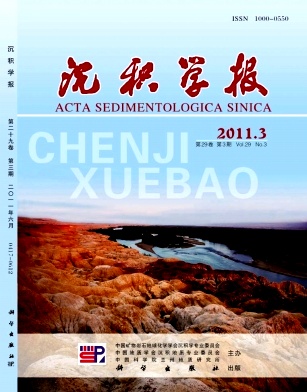Formation and Distribution of Zeolite in Volcanic Rock and Its Effect on Reserviors in Santanhu Basin
- Received Date: 1900-01-01
- Rev Recd Date: 1900-01-01
- Publish Date: 2011-06-10
-
Key words:
- volcanic rock
Abstract: The zeolite are widely distributed in volcanic rocks of Santanghu Basin, and the main groups developed in volcanic reservoirs of CarboniferousUpper Permian strata are Haerjiawu Group, Kalagang Group, Tiaohu Group. The types of reservoir space are mostly secondary dissolution aperture, with tectoclase and unconformity dissolution secondarily. Based on the study of the rock composition statistics of the wells in the selected area, We found that volcanic rocks were mainly intermediate and basic lava, amygdala developed relatively abundant, the filling holes in almond are typically zeolitebased soluble minerals and this characteristic create the helpful conditions for the postdissolution. Ourresults have shown that the main reason of laumontite formation are hydrothermal, metasomatic alteration and volcanic materials hydration, and so on. High pH has been particularly beneficial for the formation of laumontite.
By means of observations of thin section and microscopy, combining with Xray diffraction analysis, electron microprobe analysis, We determined the type of zeolite, discussed the causes of the zeolite, and pointed out that the main type of zeolite was adelforsit, with euzeolite and analcidite secondarily, they both filled in the holes (the amygdala) and the cracks, mainly through lowtemperature volcanic hydrothermal precipitation.
The zeolite minerals occurred in the volcanic amygdala and cracks of Santanghu Basin affected the reservoir properties mainly in two aspects: the early filling of zeolite reduced the porosity and permeability conditions, and the late laumontite dissolution is the key point to improve the reservoir properties. By analyzing the relationship of zeolite content with thin section porosity, indicating that the zeolite filling in the volcanic reservoir provides material basis for the postdissolution. Laumontite dissolution is the key to the formation of secondary porosity. So, laumontite growth zone of volcanic rocks in this area should be considered. to provide a direction for exploring potential reservoir.
| Citation: | LIANG Hao. Formation and Distribution of Zeolite in Volcanic Rock and Its Effect on Reserviors in Santanhu Basin[J]. Acta Sedimentologica Sinica, 2011, 29(3): 537-543. |






 DownLoad:
DownLoad: